Unreal Engine 5 introduces several groundbreaking features that significantly enhance its capabilities for game development, visualization, and other real-time applications. Here are the key features:
Nanite

Unreal Engine 5 (UE5), Nanite, image via: unrealengine.com
•Virtualized Micropolygon Geometry: Nanite allows developers to use extremely high polygon counts without performance impact, dynamically adjusting detail based on camera distance and hardware capabilities.
•Memory Efficient: It virtualizes geometry, loading only what's needed, which reduces memory usage while maintaining high-fidelity visuals.
Lumen

Unreal Engine 5 (UE5), Lumen, image via: unrealengine.com
•Fully Dynamic Global Illumination: Lumen computes lighting in real-time, providing reflections, indirect lighting, and shadows that change dynamically with in-scene modifications, without the need for pre-baking lighting.
•Scalable: Works across various hardware, automatically adjusting quality to match performance capabilities.
Virtual Shadow Maps
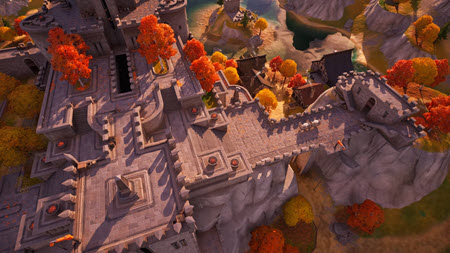
Unreal Engine 5 (UE5), Virtual Shadow Maps, image via: unrealengine.com
•Enhanced Shadow Rendering: This feature improves shadow quality especially for large scenes by using a virtual camera to render shadows at higher resolution, then warping them onto the scene.
Chaos Physics

Unreal Engine 5 (UE5), Chaos Physics, image via: unrealengine.com
•High-Fidelity Physics Simulation: Offers advanced destruction mechanics, fluid simulation, and cloth simulation, providing realistic interactions between objects.
•Integration with Niagara: Combines with the particle system for more realistic and complex effects.
MetaHuman Creator

Unreal Engine 5 (UE5), MetaHuman Creator, image via: unrealengine.com
•Realistic Human Characters: Allows for the creation of life-like digital humans with detailed facial features and animations, significantly reducing the time needed to model human characters.
World Partition System

Unreal Engine 5 (UE5), World Partition System, image via: unrealengine.com
•Streaming System: Enhances level streaming, allowing for larger, more seamless worlds by dividing the game world into smaller, manageable chunks that load and unload dynamically.
Enhanced Material System
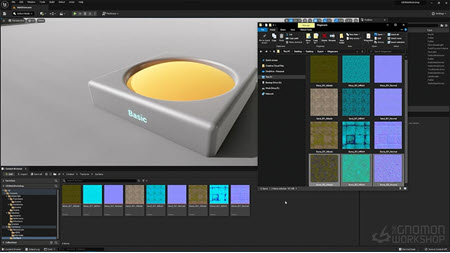
Unreal Engine 5 (UE5), Enhanced Material System, image via: unrealengine.com
•Improved Visual Shaders: Offers more complex and efficient material creation for surfaces, which can react to the environment in more realistic ways, including subsurface scattering and more.
Niagara Particle System
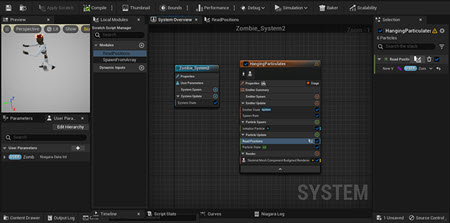
Unreal Engine 5 (UE5), Niagara Particle System, image via: unrealengine.com
•Advanced VFX: Provides a more powerful and flexible particle system for creating visual effects, with better GPU utilization and real-time editing capabilities.
MetaSounds
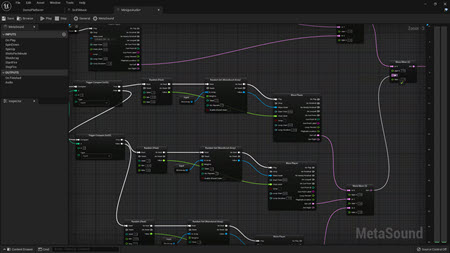
Unreal Engine 5 (UE5), MetaSounds, image via: unrealengine.com
•Interactive Sound Design: A node-based system for designing sound, allowing for the creation of complex, interactive audio directly within Unreal Engine, syncing sound with visual and physical interactions.
Scalability and Cross-Platform Development
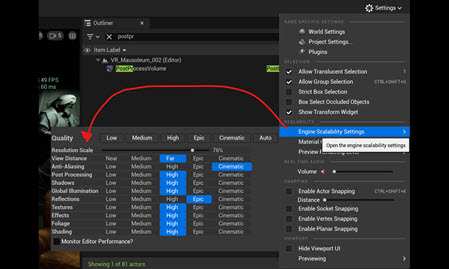
Unreal Engine 5 (UE5), Scalability and Cross-Platform Development, image via: unrealengine.com
•Universal Development: UE5 is designed to work across a wide range of platforms, from high-end PCs to mobile devices, ensuring that developers can create once and deploy across multiple platforms with minimal adjustments.
Blueprints Visual Scripting
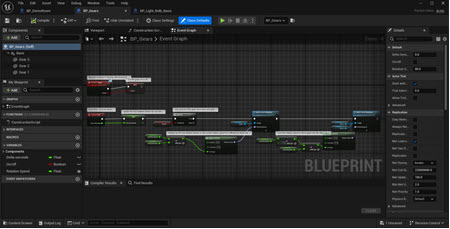
Unreal Engine 5 (UE5), Blueprints Visual Scripting, image via: unrealengine.com
•Non-Coding Development: Continues to support Blueprints, enabling game designers and artists to create gameplay mechanics without writing code, although C++ remains an option for deeper customization.
These features collectively aim to provide developers with tools that not only enhance the visual fidelity and realism of game environments but also streamline development processes, making it easier to create highly detailed, interactive, and dynamic virtual worlds. Unreal Engine 5's advancements are not just confined to gaming but extend to applications in architecture, film, automotive design, and more, leveraging real-time rendering to transform how content is created and experienced.
